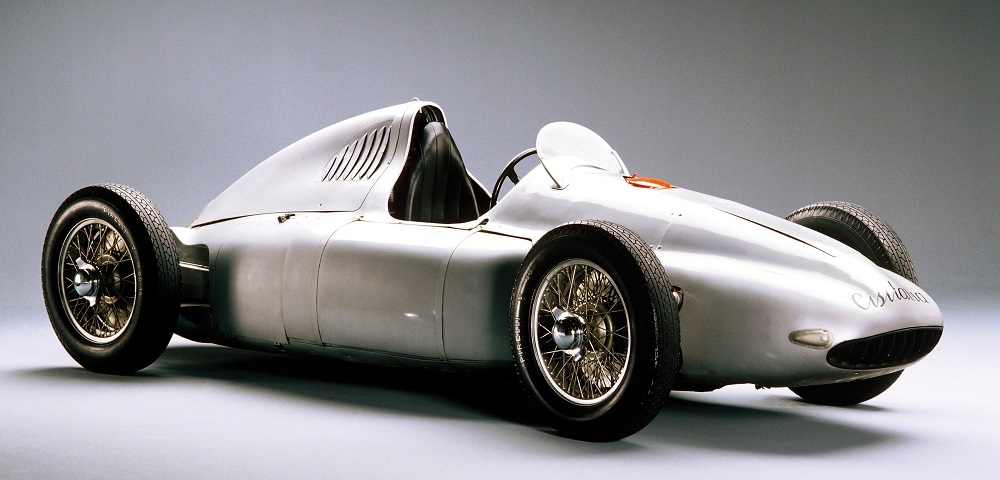
Ferdinand Porsche developed a four wheel-drive Formula One car.
the Porsche Typ 360 was an incredibly advanced single-seater Grand Prix racer utilizing a mid-mounted, 1.5 liter flat-12 with quad camshafts, twin superchargers, driving all four wheels.
January 24 ,2019
Dr. F Porsche was nonetheless a prolific and brilliant engineer in his own right, developing over the decades everything from the world’s first hybrid car in 1899, to tank and aero engines, to Auto Union’s marvelous B, C and D V16 and V12 GP racers just a fraction of his massive and varied portfolio. One of the Porsche patriarch’s most interesting and exotic racers never turned a wheel in competition, but still exists today, residing in Porsche’s spectacular corporate museum near its Stuttgart HQ. Designed and built in the old Gmünd workshop for small Italian firm Cisitalia, the Porsche Typ 360 was an incredibly advanced single-seater Grand Prix racer utilizing a mid-mounted, 1.5 liter flat-12 with quad camshafts, twin superchargers, and roller-bearing supported internals spinning 12,000 RPM through a sequentially-shifted 5-speed transmission driving all four wheels.
Twin vane superchargers force-fed an air/fuel mixture supplied by a pair of dual-throat downdraft Weber carbs, and bench tests reportedly netted 385 HP at 10,500 RPM in a very early, underdeveloped state of tune. Porsche is said to have projected 500 HP at a 12k rev ceiling, and probably would have achieved this goal given enough time and funding. Power, once directed through a fully-synchronized sequential 5-speed gearbox, was put down to the rear wheels under normal conditions, or split front/rear to aid acceleration out of corners, as selected by the driver via a lever mounted to the dash–presumably the one being grasped in the image below. This novel feature was proposed in order to help alleviate traction issues experienced with the hugely powerful (and strictly rear-driven) Auto Union GP cars, some of which were run with dual rear wheels towards the same goal.
The legendary Tazio Nuvolari, who as an Auto Union driver in 1938 and ’39 had direct experience with the earlier Porsche designs that inspired the Cisitalia GP, was invited to drive the car, ostensibly for further development testing. In reality, publicity gained from this event was probably deemed to be of greater value. Ultimately, Nuvolari’s test run failed to inject much-needed finances into the project, and with development proving prohibitively expensive, key Cisitalia figure Piero Dusio relocated to Argentina in 1948 or so. Returning to Europe a few years later to repay his creditors, Dusio was also able to secure the GP car as well as a large cache of spares, all of which were then sent to South America.
At one point Dusio attempted to secure funding from president Juan Perón, but by 1952 Formula 1 displacement rules changed, instantly crushing any hopes of the car competing as designed. This was an unfortunate turn of events, as despite being several years old by this point, the 360 GP was still very much ahead of its time and may have well proved dominant provided the proper resources.The Type 360 was then used to set a few South American records, including speed over a distance of 1,000 meters, which the car achieved at 233 km/h (~145 mph). It was set to race in local Formula Libre events for 1953, but a lean fuel charge led to two burnt pistons, after which the car was essentially retired. As noted above, it now resides in Porsche’s Stuttgart museum.